What is a model explainer? A model explainer is a function designed to show how the model produces different predictions. Models in 2D are relatively easy to describe. For example, there we could have a classification model determined by a single line.
However, models frequently have more than 2 features, and so cannot be easily placed on a single chart. However, a model explainer can help us answer the following questions. Which features are the most important? How does changing those features impact the prediction? Is the model more complicated than it needs to be?
Sometimes in machine learning, you'll hear the term 'black box' used to describe the obscurity of machine learning models. Often times when working on a model, it falls to the user to determine how a model came to the conclusions that it did. With model explainers, that is no longer a problem! And so, to prevent model explainers themselves becoming a 'black box' of obscurity, it's time to learn about how they work.
I'll be mostly discussing how the SHAP model works, as it was the first model explainer to hit the scene and is currently among the most popular. Rest assured, other model explainers are either built on top of SHAP or simply work similarly to how SHAP functions.
SHAP's documentation website self-describes as the following: "SHAP (SHapley Additive exPlanations) is a game theoretic approach to explain the output of any machine learning model. It connects optimal credit allocation with local explanations using the classic Shapley values from game theory and their related extensions."
This description, while accurate, is full of technical jargon that is hard to parse. To understand it, we need to understand Shapley values.
Shapley values, named after and introduced by Lloyd Shapley in 1951, are 'game theory' principles used to explain certain mathematical problems. For example, if we have a coalition 'C' that collaborates to produce a value V, how much did each individual member contribute to the final value?
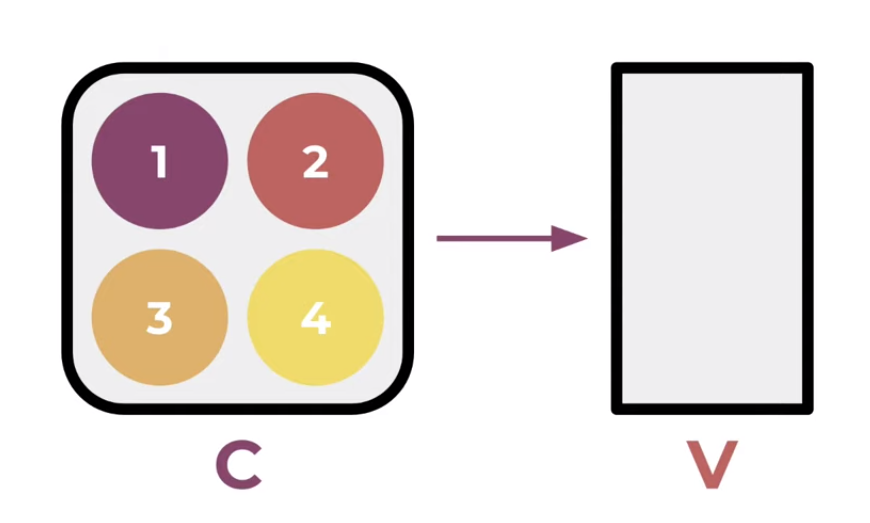 The answer to this may appear simple, but it can become quite tricky when there are interacting effects between members, and when certain permutations can cause members to contribute more than the sum of their parts. So, we calculate the Shapley value of each individual member to determine a sort of relevant worth to the coalition. First, we can take sample a coalition that contains member 1, then looking at the coaltion formed by removing that member.
The answer to this may appear simple, but it can become quite tricky when there are interacting effects between members, and when certain permutations can cause members to contribute more than the sum of their parts. So, we calculate the Shapley value of each individual member to determine a sort of relevant worth to the coalition. First, we can take sample a coalition that contains member 1, then looking at the coaltion formed by removing that member.
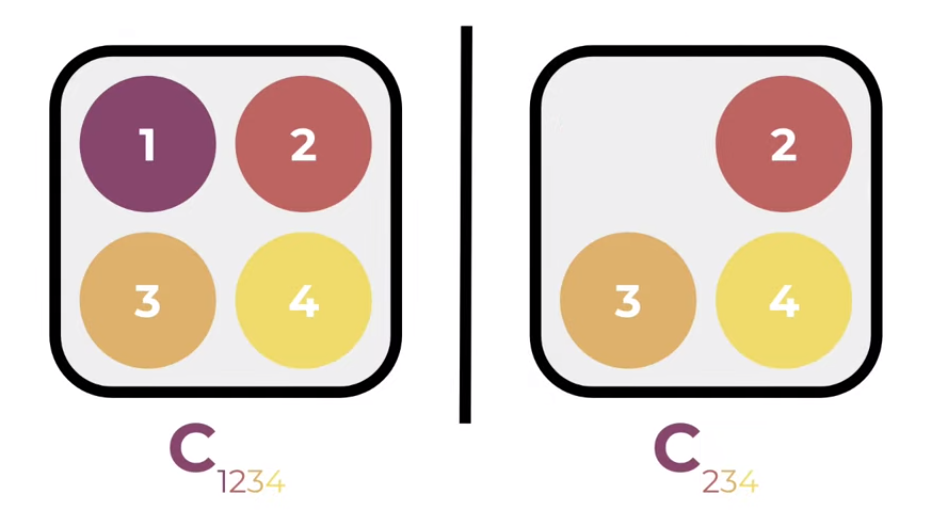
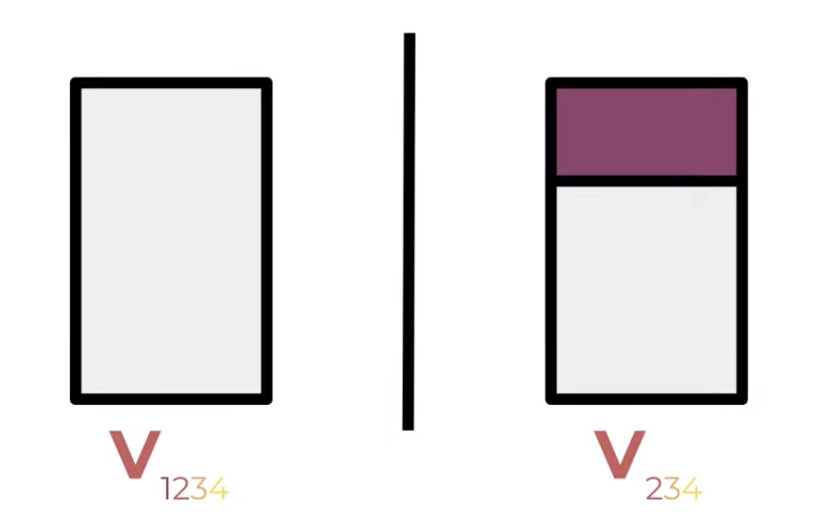 We can then compare the respective values of the two resulting coalitions, and compare between the two. The difference is the marginal contribution of member 1 to C(234). That's how member 1 contributed to that specific group.
We can then compare the respective values of the two resulting coalitions, and compare between the two. The difference is the marginal contribution of member 1 to C(234). That's how member 1 contributed to that specific group.
 Then, we're able to do this for every single permutation that contains member 1.
Then, we're able to do this for every single permutation that contains member 1.
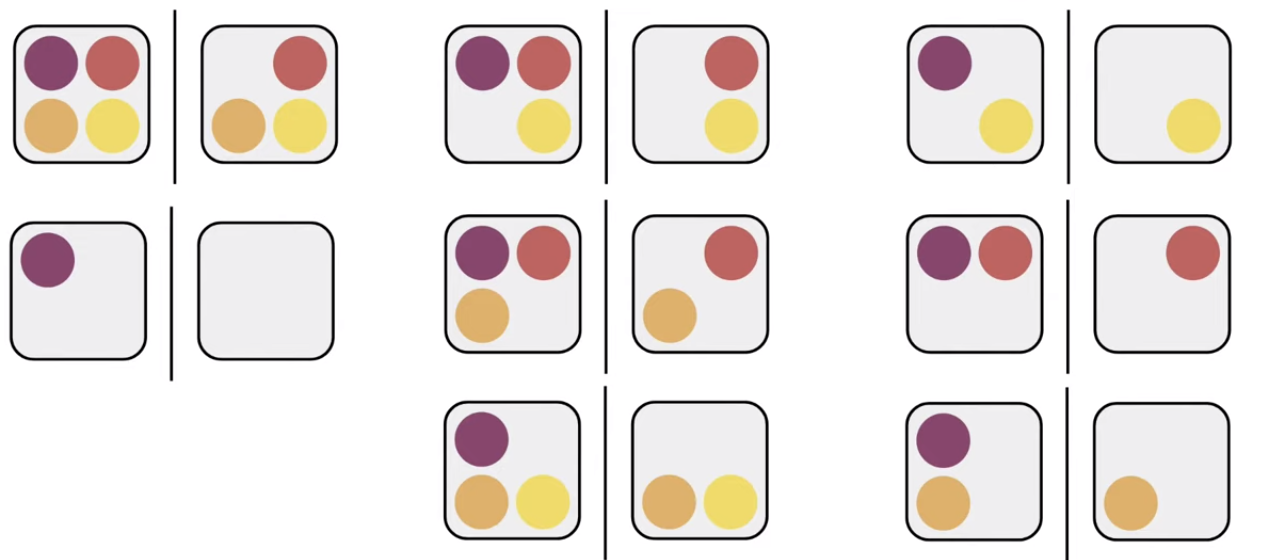 Taking the mean of the marginal contribution of member 1 to all of these grants as our Shapley value, signified with the lowercase phi, or
Taking the mean of the marginal contribution of member 1 to all of these grants as our Shapley value, signified with the lowercase phi, or
Mathematically, this is exaplained thusly:

Translating this concept to model explainability is pretty straightforward, as you can imagine. It was first done in 2017 by Scott M Lundburg and Su-In Lee in thier paper, "A Unified Approach to Interpreting Model Predictions". You can access their paper here.
This paper is where SHAP was introduced. SHAP changed how we view Shapley values from members of a coalition contributing to a vlue, to features contributing to a function or a model's output. We can get a clue of how they do so by taking a look at the acronym 'SHAP': Shapley Additive Explanations. We now know what Shapley values are, and we know what an explanation is (hopefully), but what does additive mean here? Lundburg and Lee define an addative feature attribution as follows.
 Given features inputs x and model f(x), we can define a set of simplified local inputs as x'. This means that we take a feature vector into a discrete binary vector where features are either included or excluded. We can also define an explanatory model g(x'), which we will see it's importance in a moment.
Given features inputs x and model f(x), we can define a set of simplified local inputs as x'. This means that we take a feature vector into a discrete binary vector where features are either included or excluded. We can also define an explanatory model g(x'), which we will see it's importance in a moment.
Lundburg and Lee then define two things that we need to ensure. One, if x is roughly equivalent to x', then f(x) is roughly equivalent to g(x').
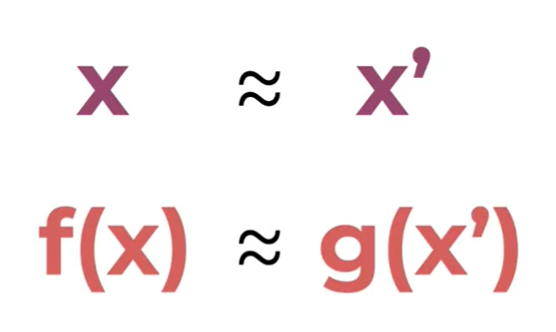 And two, that g must take this form. Phi-0 here is the null output of the model, which is just the average output of the model, and phi-i is the explained effect of feature i. This is also known as it's attribution.
And two, that g must take this form. Phi-0 here is the null output of the model, which is just the average output of the model, and phi-i is the explained effect of feature i. This is also known as it's attribution.
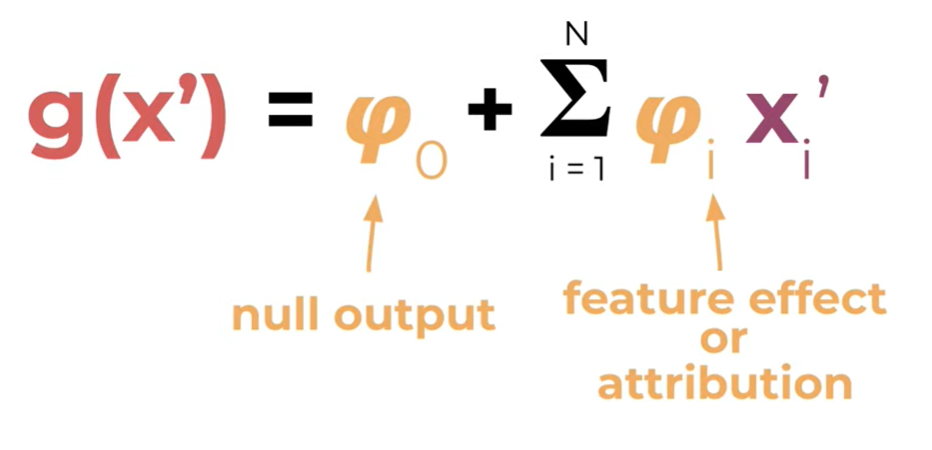 These two properties together bring us an explanatory model that has additive feature attribution.
These two properties together bring us an explanatory model that has additive feature attribution.
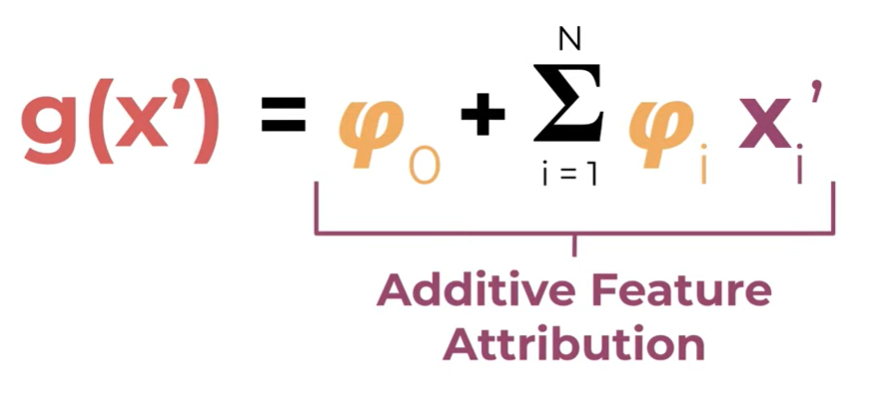 The very nice thing about this is thatg it is very easy to see the importance of each feature. All we have to do is look at our phi values and we can determine the contribution of each feature in the model.
The very nice thing about this is thatg it is very easy to see the importance of each feature. All we have to do is look at our phi values and we can determine the contribution of each feature in the model.
https://www.analyticsvidhya.com/blog/2020/03/6-python-libraries-interpret-machine-learning-models/ Depending on the project that you are working on, different model explainers will be able to tell you your results in different ways. There are 6 main model explainers, each with their own personality.
LIME SHAP Yellowbrick Alibi Lucid
Global Features Importances (Model Level): It lets us analyze model weights to understand the global performance of the model.
Local Features Importances (Individual Example Level): It lets us analyze individual data example's prediction to understand the local performance of the model. This can help us drill down why the particular prediction was made and which data features played what role in that prediction.
Shaply Additive Explanations or SHAP values uses game theory to define the importance of different features within a given model. 'The Shapley value is the average of all the marginal contributions to all possible coalitions.' So for example, a positive Shaply value of 1.24 would indicate a positive effect on the accuracy of the model, whereas a score of -1.24 would indicate the opposite. It's also important to note that Shaply values 'don't evaluate the quality of the model itself.'
-
https://www.kaggle.com/code/dansbecker/advanced-uses-of-shap-values/tutorial
-
https://medium.com/analytics-vidhya/explain-ml-models-shap-library-5ce375c85d7d
-
https://www.kaggle.com/code/scratchpad/notebook616777f210/edit
-
https://christophm.github.io/interpretable-ml-book/shapley.html
https://www.analyticsvidhya.com/blog/2020/11/demystifying-model-interpretation-using-eli5/
The LIME (Local Interpretable Model-Agnostic) model explainer creates explanations for models which answer the question, "Why can I trust this model?" It does this by providing detailed breakdowns of each decision. Below is an example of using the LIME model explainer to analyze a sentiment analysis project on a group of newsgroup posts about religion.
from __future__ import print_function
import lime
import sklearn
import numpy as np
import sklearn
import sklearn.ensemble
import sklearn.metrics
from sklearn.datasets import fetch_20newsgroups # get dataset
categories = ['alt.atheism', 'soc.religion.christian'] #filter by topic
newsgroups_train = fetch_20newsgroups(subset='train', categories=categories) # divide into train and test groups
newsgroups_test = fetch_20newsgroups(subset='test', categories=categories)
class_names = ['atheism', 'christian']
vectorizer = sklearn.feature_extraction.text.TfidfVectorizer(lowercase=False)
train_vectors = vectorizer.fit_transform(newsgroups_train.data)
test_vectors = vectorizer.transform(newsgroups_test.data)
rf = sklearn.ensemble.RandomForestClassifier(n_estimators=500)
rf.fit(train_vectors, newsgroups_train.target) #fit the model
pred = rf.predict(test_vectors)
print(sklearn.metrics.f1_score(newsgroups_test.target, pred, average='binary'))This model has an F1 score of .91666. Rather than using the sklearn confusion matrix, we can look at what the model is doing much more closely for each decision. Below is an example of how to use the LIME model explainer to look at a local decision.
from lime import lime_text
from sklearn.pipeline import make_pipeline
c = make_pipeline(vectorizer, rf)
print(c.predict_proba([newsgroups_test.data[0]]))
from lime.lime_text import LimeTextExplainer
explainer = LimeTextExplainer(class_names=class_names)
idx = 84 # pick document ID
exp = explainer.explain_instance(newsgroups_test.data[idx], c.predict_proba, num_features=6) # create explainer object
print('Document id: %d' % idx)
print('Probability(christian) =', c.predict_proba([newsgroups_test.data[idx]])[0,1]) # pull out information on the prediction
print('True class: %s' % class_names[newsgroups_test.target[idx]])
print(exp.as_list()) # list top 6 words that made the decision
fig = exp.as_pyplot_figure()
exp.show_in_notebook(text=True)https://titanicexplainer.herokuapp.com/classifier/
resources:
https://www.kaggle.com/code/dansbecker/advanced-uses-of-shap-values/tutorial
https://medium.com/analytics-vidhya/explain-ml-models-shap-library-5ce375c85d7d
https://www.kaggle.com/code/scratchpad/notebook616777f210/edit


